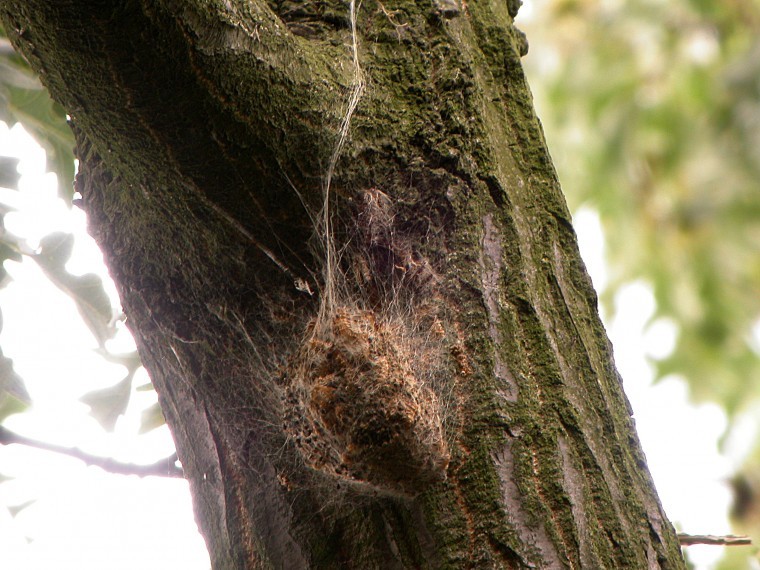People can also develop rashes and eye and throat irritations from exposure to caterpillars of the Oak processionary moth (OPM), an exotic species which was accidentally introduced 11 years ago. It is possible that it will be found in southern parts of Hertfordshire and Buckinghamshire this year.
OPM is a tree health hazard because its caterpillars, moving about in nose-to-tail processions, feed on oak leaves, weakening the trees.
They are also a human and animal health hazard. The caterpillars’ tiny hairs, which can be blown by the wind, contain a substance called thaumetopoein, which on contact can cause itching skin rashes and, less commonly, eye, ear and throat irritations and breathing difficulties.
Naturally curious animals such as cats and dogs are most vulnerable. Symptoms reported in animals, especially those which have licked, sniffed, picked up or tried to eat caterpillars or nests, include hyper-salivation, swelling of the tongue, conjunctivitis, gagging, vomiting, respiratory distress and inflammation of the mouth.
The hairs also build up in the caterpillars’ silken webbing nests, which they build on the branches and trunks of oak trees in May and June, sometimes at ground level. Nests sometimes fall to the ground, and the caterpillars sometimes descend to the ground, posing a risk to grazing livestock, inquisitive animals, and people.
The Forestry Commission is leading efforts with councils and major landowners to minimise the spread, population and impacts of the pest in a Defra-funded control programme. Andrew Hoppit, its OPM project manager, said: “It’s essential that livestock farmers in the affected areas are aware of the hazard this pest poses to their animals, themselves and their families. Naturally curious animals such as cats and dogs like to investigate items of interest, but they really must be restrained from doing this in the case of OPM nests and caterpillars, and kept away from infested oak trees if possible.
“I also encourage farmers in the affected areas to help us by reporting sightings of the pest using the ‘Tree Alert’ reporting tool on our website, which has a lot of helpful information, including guides to recognising OPM.”
Protective measures include getting the pest removed from affected oak trees, fencing animals away from affected oak trees, stabling or covering them on windy days, and avoiding riding trails lined by affected oak trees. Dogs and cats should be restrained from investigating caterpillars or nests.
Farmers whose animals have been seriously affected should consult a vet. The effects on people, although unpleasant, are not usually medically serious and pass in a few days. People who have been affected should consult a pharmacist for relief from the symptoms, or a doctor for serious allergic reactions, although these are rare.




